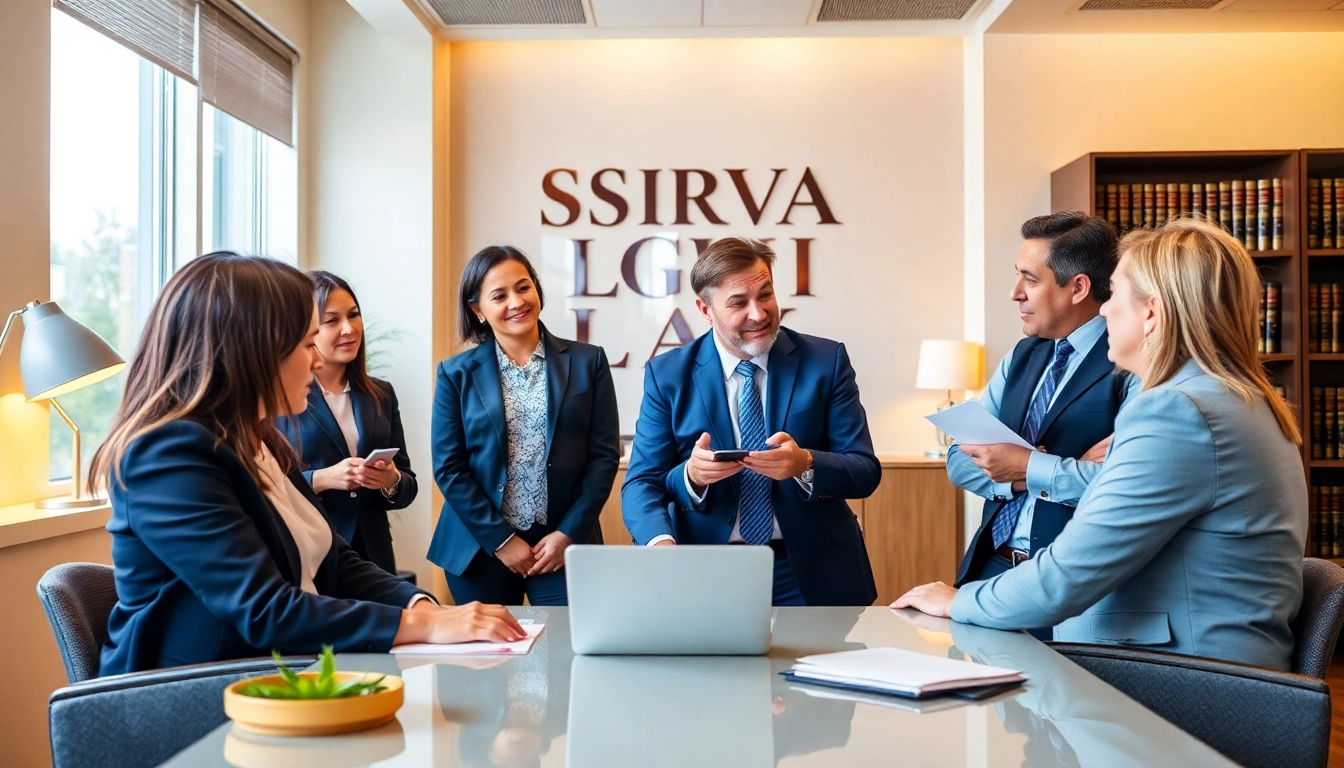Understanding Mass Tort Marketing
Mass tort marketing is an intricate and specialized area of legal marketing aimed at promoting legal services related to mass tort claims. These claims typically arise from widespread harm caused by defective products, pharmaceuticals, or corporate negligence affecting a large group of people. Given the complexities involved in mass tort cases, effective marketing strategies are essential to successfully reach potential clients and stand out in a competitive market. Understanding the nuances of Mass Tort Marketing can significantly affect your firm’s outreach and success.
What is Mass Tort Marketing?
Mass tort marketing refers to the strategies and practices employed by law firms to attract clients who may have claims arising from similar legal issues. Unlike typical personal injury cases, mass torts often involve numerous plaintiffs who have suffered similar damages due to a common product or action. The marketing approach for mass torts is unique because it requires an understanding of both legal aspects and consumer behavior.
The primary goal of mass tort marketing is to raise awareness about specific cases and connect affected individuals with legal representation. It can encompass various tactics including digital marketing, social media outreach, content marketing, and more. Law firms need to develop campaigns that accurately portray the situation while offering clear pathways for affected individuals to seek help.
Key Features of Successful Campaigns
Successful mass tort marketing campaigns typically share several key features:
- Targeted Messaging: Crafting messages that resonate with the specific experiences of potential clients is essential. This involves using language that reflects understanding of their pain points and concerns.
- Multi-Channel Approach: Utilizing various channels—SEO, social media, email campaigns, and direct outreach—ensures a comprehensive reach.
- Data-Driven Strategies: Employing analytics to track audience behavior and response rates allows marketing teams to adjust their strategies in real-time for better engagement.
- Educational Content: Providing valuable information through blogs, webinars, and FAQs positions your firm as a knowledgeable leader in the space, building trust with potential clients.
Differences Between Mass Tort and Other Marketing Types
While traditional legal marketing may focus on individual cases, mass tort marketing differs significantly. Key distinctions include:
- Broader Target Audience: Mass torts affect large groups, necessitating outreach that appeals to community-based concerns rather than individual circumstances.
- Emphasis on Collective Harm: Marketing focuses on the shared experiences of the affected population, highlighting the collective nature of the claim.
- Complex Legal Messaging: Campaigns must convey complex legal information clearly and accurately, accessible to the average consumer.
Identifying Target Audiences for Mass Tort Cases
Identifying the right audience for mass tort marketing is crucial for connecting with potential claimants. Proper audience segmentation can lead to more effective outreach and higher conversion rates.
Defining Your Ideal Client
The first step in identifying your audience is understanding who your ideal client is. In mass torts, this often means looking for individuals who:
- Have suffered similar injuries or damages.
- Fall within specific demographics that align with the case (e.g., age, location, economic status).
- May be unaware of their rights or the possibility of joining a mass tort claim.
Creating personas based on these characteristics can guide your marketing efforts and improve messaging strategies.
Using Data Analytics to Understand Audience Behavior
Data analytics play a pivotal role in mass tort marketing. Tools such as Google Analytics, social media insights, and client management systems provide invaluable information on audience behavior, preferences, and engagement patterns. By analyzing this data, law firms can:
- Identify the most effective channels for reaching their audience.
- Track conversion rates and adjust strategies accordingly.
- Understand which messages resonate best with potential clients.
Staying informed about audience behavior enables firms to create audience-centric campaigns that effectively communicate the urgency and importance of their services.
Crafting Personalized Messaging for Engagement
Once you have defined your ideal client and analyzed data behaviors, the next step is crafting personalized messaging. Personalization can be achieved through:
- Dynamic Content: Utilizing tools that allow for dynamic content based on user behavior can significantly enhance engagement.
- Tailored Email Campaigns: Segment your email lists based on demographic and behavioral data to send targeted messages that directly appeal to each group.
- Storytelling: Use narratives that highlight real experiences of past clients to foster emotional connections with potential claimants.
Personalized messaging increases the likelihood of engagement and helps build a rapport with potential clients from the start.
Developing a Comprehensive Mass Tort Marketing Strategy
A successful mass tort marketing strategy integrates multiple components to maximize reach and effectiveness. It is essential to develop a coherent plan that aligns with organizational goals.
Creating a Multi-Channel Marketing Plan
A multi-channel approach involves leveraging various platforms to amplify your message. Effective channels for mass tort marketing include:
- Search Engine Optimization (SEO): Optimize content for search engines to ensure potential clients find your law firm when searching for related topics.
- Social Media: Use platforms like Facebook, Instagram, and LinkedIn to reach large audiences and keep them informed about ongoing cases and developments.
- Email Marketing: Develop targeted email campaigns to nurture leads and keep potential clients updated on legal issues pertinent to mass torts.
Each channel plays a unique role in your strategy; thus, understanding where your audience spends their time is essential for effective outreach.
Leveraging Social Media for Wider Outreach
Social media platforms provide law firms with a powerful tool for engaging clients. Strategies for leveraging social media include:
- Educational Content: Share informative articles, infographics, and videos that outline the specifics of mass torts, ensuring the information is digestible.
- Engagement: Actively engage with followers by responding to comments, participating in discussions, and promoting community awareness around ongoing legal issues.
- Advertising: Utilize paid social media ads targeted towards demographics relevant to your mass tort case to enhance visibility.
Wider outreach through social media increases the potential for reaching affected individuals who need legal assistance.
Utilizing Content Marketing to Educate and Inform
Content marketing serves as an avenue for providing valuable information while simultaneously establishing authority in your practice area. Consider these tactics:
- Blog Posts: Regularly update your blog with accurate information on mass torts, guidelines, and case updates which can help build trust with readers.
- Webinars and Podcasts: Host online events to discuss relevant topics with your audience, provide valuable insights, and answer questions.
- Case Studies: Showcase previously successful mass tort cases to demonstrate your firm’s credibility and effectiveness.
By providing educational content, you foster a knowledgeable reputation and build a community around your legal expertise.
Optimizing Your Website for Mass Tort Marketing
Your website is often the first interaction potential clients have with your firm; thus, optimization is essential for conversion. A well-structured website can significantly enhance user experience and lead generation.
SEO Best Practices for Legal Marketing
Implementing SEO best practices can improve your website’s visibility. Key practices include:
- Keyword Research: Use relevant keywords that potential clients are searching for, focusing specifically on terms associated with mass torts.
- On-Page Optimization: Ensure that each page of your site is optimized for search engines, including meta descriptions, alt text, and internal linking.
- Mobile-Friendly Design: With the increasing use of mobile devices, ensure your site is responsive and easy to navigate on any device.
When done correctly, SEO can significantly improve traffic to your site and facilitate higher client conversion rates.
Creating Effective Landing Pages for Leads
Landing pages specifically designed for mass tort campaigns can help capture leads effectively. Important elements to include:
- Clear Headline: Use direct and compelling headlines that resonate with the concerns of your target audience.
- Engaging Content: Provide concise and valuable information about the mass tort case, its impact, and how your firm can help.
- Lead Capture Forms: Integrate forms that allow potential clients to easily express interest and provide contact information.
A well-structured landing page can enhance conversion rates by simplifying the process for potential clients to connect with your firm.
Implementing Clear Calls-to-Action for Engagement
Clear and compelling calls-to-action (CTAs) guide potential clients toward taking the next step. Best practices for effective CTAs include:
- Visibility: Ensure CTAs are prominently placed on your webpages and easy to locate.
- Action-Oriented Language: Use strong, actionable language that encourages immediate engagement, such as “Get Informed Today!” or “Find Out if You Qualify!”
- A/B Testing: Regularly test different wording, colors, and placements of CTAs to see what performs best with your audience.
Well-optimized CTAs can significantly increase lead conversions and drive potential clients to action.
Measuring Success in Mass Tort Marketing Campaigns
Measuring the success of your mass tort marketing campaigns is vital for understanding their impact and informing future efforts. Without proper measurement, it’s challenging to know which strategies are effective.
Key Performance Indicators to Track
Identifying and monitoring specific key performance indicators (KPIs) is crucial for assessing your campaign’s effectiveness, such as:
- Website Traffic: Monitor increases in traffic to your website, particularly on pages relevant to your mass tort cases.
- Lead Generation: Track the number of leads generated through forms, calls, and inquiries.
- Engagement Metrics: Measure time spent on site, bounce rates, and social media interactions to gauge audience engagement.
Regularly reviewing these metrics allows you to adjust strategies based on what is working and what isn’t.
Analyzing Data for Continuous Improvement
Continuous improvement is a hallmark of successful marketing strategies. Analyze your data to find insights and trends that can inform future campaigns. This might include:
- Identifying the most successful channels for lead generation.
- Understanding audience engagement patterns to refine your messaging.
- Adjusting budget allocations to focus on the highest-performing marketing tactics.
By taking an analytical approach, your firm can remain agile and responsive to changing market needs.
Adapting Strategies Based on Performance Metrics
It’s important to remain flexible and willing to pivot your strategies as necessary based on performance metrics. Some steps to consider:
- Regular Strategy Reviews: Establish a routine for reviewing all marketing initiatives to ensure alignment with current objectives.
- A/B Testing: Implement A/B testing for campaigns to find the most effective content and delivery methods.
- Feedback Loops: Collect feedback from clients and leads on their experience, which can provide insight into potential adjustments.
Adapting strategies based on research and performance metrics is critical for long-term success in mass tort marketing.




